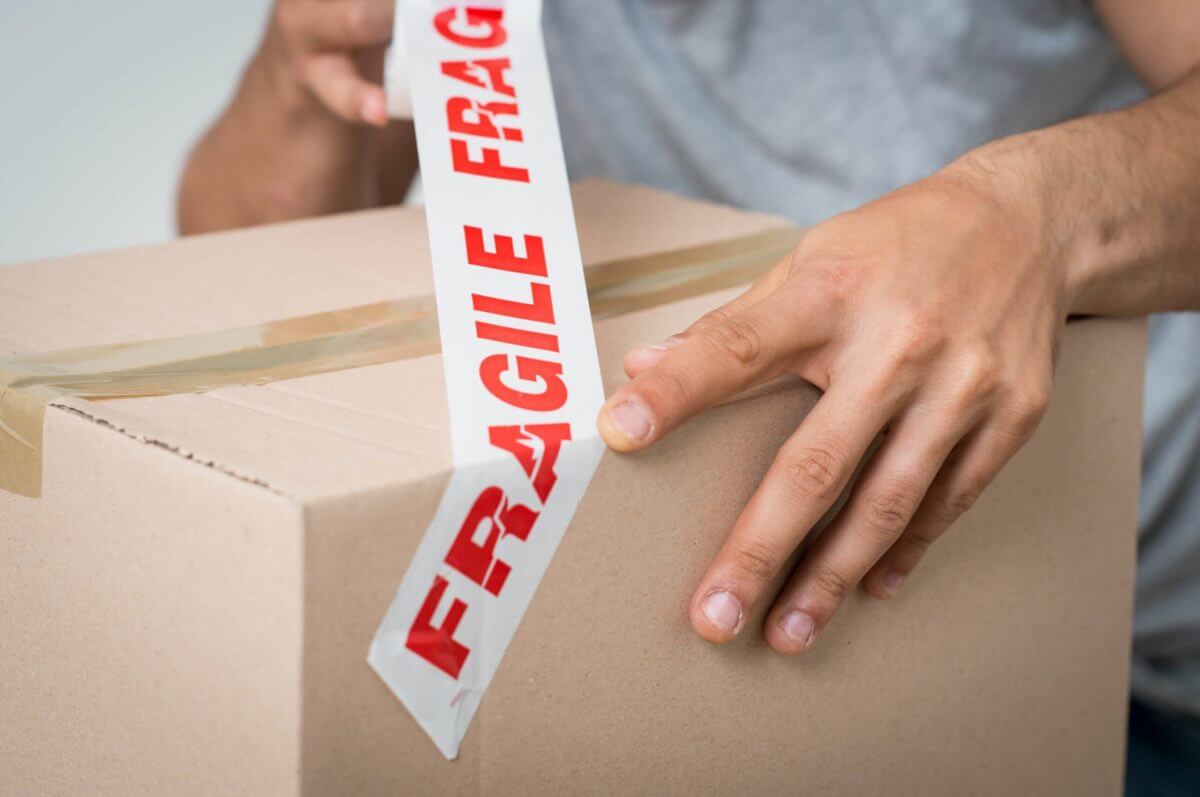Moving cross country can be challenging, but it becomes even more complex when assisting someone with hoarding tendencies. Understanding how to help a hoarder move requires compassion, organization, and expert strategies. Cross Country Moving Company offers tips and guidance to navigate this sensitive process, ensuring a smoother transition.
Helping a hoarder move can be quite difficult - you need to prepare yourself properly How to Help a Hoarder Move?
Helping a hoarder relocate to a new home involves a thoughtful, organized approach. Start by understanding their emotional attachment to their belongings. Hire movers and create a detailed plan for decluttering. Sort items into categories: keep, donate, and discard.
Be patient and compassionate throughout the process. Ensure the future home is organized before relocation. Utilize creative storage solutions to manage excess items. Be sure to provide continuous support during and after relocation to help them adjust. This structured method ensures an efficient relocation and supports their mental well-being.
Understanding Hoarding to Ensure Compassionate Moving Assistance
Helping someone with a hoarding disorder relocate to a new state requires sensitivity and understanding. Hoarding is more than just an accumulation of items – it’s a complex mental health issue. To provide compassionate assistance, it’s crucial to grasp the emotional and psychological dimensions of hoarding. Recognizing the deep attachment to possessions and the anxiety associated with relocating and discarding items is essential. By empathizing with these challenges, you can approach the move with the care and support needed.
What Is a Hoarding Disorder?
Hoarding disorder is characterized by the persistent difficulty in discarding or parting with possessions, regardless of their actual value.
This behavior often results in the accumulation of items that clutter living spaces, making them unusable for their intended purpose.
Common characteristics include excessive acquisition, extreme attachment to possessions, and significant distress when attempting to discard items.
About 20% of people with a hoarding disorder also have OCD
Hoarders often believe that items might be useful in the future or have sentimental value. Understanding these traits is key to addressing the issue effectively and with compassion.
Unique Challenges of Helping Someone With a Hoarding Disorder Relocate
Relocating to a new city with a person who suffers from a hoarding disorder presents unique challenges. One major issue is the emotional attachment to possessions. Each item, no matter how trivial, can hold significant sentimental value, making sorting and discarding extremely distressing.
Additionally, the sheer volume of items can be overwhelming and potentially hazardous. Clutter can pose risks such as tripping, fire hazards, and health concerns due to accumulated dust and mold. Approaching the relocation with patience, empathy, and a structured plan can help mitigate these challenges, ensuring a safer and more supportive transition for the individual.
Relocation is a difficult process for a person with a hoarding disorder Preparing for the Move – Organized Moving Process and Open Communication
Preparing for relocation with a hoarder requires an organized approach and open communication. Establishing a structured plan ensures the process is manageable and with less relocation stress. Begin by discussing the move openly, addressing concerns, and setting clear goals. Open and compassionate communication throughout the process is essential to keep everyone on the same page and reduce the fear of relocating.
Why Is Open and Compassionate Communication Important in These Situations
Sensitivity in approaching the topic of decluttering and packing for relocation helps build trust and reduces resistance. Acknowledge the emotional difficulty of parting with possessions and show empathy. By validating their feelings and involving them in decision-making, you create a supportive atmosphere that facilitates cooperation and eases the transition.
Developing a Realistic Relocation Plan – A Timeline and a Relocation Checklist
Creating a realistic relocation plan involves setting a clear timeline and breaking down the process into manageable steps. Start by determining a relocation date and work backward to establish deadlines for each task. A detailed relocation checklist is essential, outlining tasks such as sorting items, packing, and arranging transportation.
Divide larger tasks into smaller, achievable steps to maintain momentum and avoid feeling overwhelmed. Regularly review and adjust the plan as needed, ensuring flexibility and keeping the process on track. This structured approach helps manage the complexity of relocating while providing a sense of accomplishment and progress.
Having a list to keep track of your tasks and progress is crucial for success Sorting and Decluttering – Where to Start
When assisting a hoarder with relocating, the sorting and decluttering phase is critical. Begin by creating a calm and non-judgmental atmosphere. Start in a less cluttered area to build momentum and confidence. Gradually proceed to sort more cluttered spaces, tackling one area at a time. This approach prevents overwhelm and provides a sense of accomplishment as progress is made. Encourage regular breaks to manage stress and maintain focus.
Creating a Sorting System – Hoarding Decluttering Strategies
A well-organized sorting system is essential for effective decluttering – and efficient packing later on. Begin by categorizing items into four main groups – what to keep, donate, sell, and discard. This system simplifies decision-making.
Using colored labels or bins for each category can enhance organization and visual clarity. For example, you can use green for items to keep, blue for donations, yellow for items to sell, and red for items to get rid of. This method helps streamline the process and ensures that each item is dealt with appropriately. Additionally, consider involving a professional organizer who specializes in hoarding to provide expert guidance and support.
Prioritizing Safe Moving Practices and Hygiene
Safety and hygiene are paramount when assisting a hoarder with packing and relocating. Addressing potential health hazards such as mold, pests, and dust is crucial. Use protective gear like gloves, masks, and eye protection to ensure a safe environment for sorting and packing. Ensure proper ventilation and consider hoarding clean-up services if it seems like move-out cleaning will be too much for you.
Keep pathways clear to avoid tripping hazards. Regularly sanitize hands and tools to maintain hygiene. By prioritizing safety and cleanliness, you create a healthier environment that facilitates a safer relocation process. This attention to detail helps protect everyone involved and ensures a stress-free transition.
Plan your decluttering process carefully - approach with empathy and understanding Strategies for Supporting a Hoarder Emotionally During Relocation to a New Home
Supporting a hoarder emotionally requires patience, understanding, and a tailored approach. It’s essential to create a supportive environment where the hoarder feels safe and understood. This emotional support can make the challenging process of relocating more manageable and less stressful.
Encouraging Decision-Making
Helping a hoarder make decisions without pressure is crucial. Instead of dictating what to do, guide them gently through the process. Offer choices and listen to their concerns, validating their feelings and reasons for holding onto items. This approach helps build trust and encourages cooperation.
Providing support and reassurance can ease the fear of losing valuable possessions. Remind them that it’s okay to take their time and that they are in control of the decisions. Celebrate small victories, reinforcing their ability to make positive changes.
Setting Small, Achievable Goals
Breaking down the relocation process into small, achievable goals is essential for maintaining motivation and reducing overwhelm. Focus on one area or room at a time to make the task seem less daunting. Set clear, manageable objectives for each session, such as sorting a specific closet or organizing a particular pile.
This methodical approach helps maintain momentum and makes the overall process more manageable. By focusing on incremental progress, you help the hoarder build confidence and gradually transform their living space, leading to a successful and less stressful relocation without any relocation mistakes that would be regretted afterward.
Emotional support can go a long way when preparing a hoarder for a relocation Utilizing Professional Help – Hiring Cross-Country Movers
Choosing a long-distance moving company with experience in hoarding situations can significantly ease the process. Expert long-distance movers understand the unique challenges of each relocation and provide a tailored cross-country moving service to ensure a smooth transition.
To find the right company, look for those with proven experience in hoarding moves and positive client testimonials. Reliable cross-country moving companies offer specialized services, from packing assistance and sorting to transportation and unloading, alleviating much of the stress involved.
One of the top-rated companies is our very own Cross Country Moving Company. With our extensive experience, we’re more than qualified to assist you with this difficult endeavor. On that note, here are the benefits of booking our professional long-distance moving services:
- Expertise in handling delicate situations with sensitivity,
- Efficient and organized packing as a part of cross-country moving services,
- Access to appropriate equipment and resources,
- Reduced stress and emotional burden for the hoarder,
- Safe and hygienic handling of items.
When to Involve Mental Health Professionals?
Involving mental health professionals during relocation can be crucial for hoarders. Mental health support for hoarders plays a vital role in addressing the emotional and psychological challenges associated with hoarding. Support includes coping strategies, help with decision-making, and managing anxiety and depression after relocating.
Additionally, professionals offer continuous support before, during, and after the move to ensure a smoother transition. Utilizing resources like therapy and counseling services specializing in hoarding, support groups such as Hoarders Anonymous, and community hotlines for immediate assistance can provide a robust network of support.
Packing and Moving Tips for Hoarders
Packing and moving can be especially challenging for hoarders, but following a few key relocation tips can make the process smoother. Use high-quality boxes and packing materials to ensure items are well-protected. This is particularly important for heavier or irregularly shaped belongings. Labeling boxes with their contents and designated rooms makes unpacking after relocation easier and more organized.
Expert Tips for Moving Safely
When loading items onto the moving truck, prioritize safety by placing heavier boxes on the bottom and lighter ones on top. Secure fragile items with extra padding and label them as “Fragile” to ensure careful handling. If possible, transport highly valuable or sentimental items separately to minimize the risk of damage. Taking these steps ensures a safe move, reducing stress and potential complications for hoarders during the transition.
Careful handling of fragile items is crucial for preventing damage during shipping Settling Into the New Home- Maintaining Progress
Setting up the new home with organization in mind is crucial for maintaining progress. Start by creating designated spaces for each category of items and using storage solutions to keep things tidy. Encourage the hoarder to maintain a clutter-free environment by implementing daily or weekly cleaning routines. This helps prevent the accumulation of new clutter and reinforces the positive changes made during this relocation.
Continued Support and Follow-Up
Continued support is vital to ensure long-term success. Regular check-ins provide emotional support and help address any emerging issues. Encourage connecting with local resources and support groups. These connections offer ongoing guidance and community, helping the hoarder stay on track and maintain a healthy, organized living space.
The home may be clutter-free now, but it's important to keep it that way in the future Contact Cross Country Moving Company – Our Movers Offer Expert Assistance and Empathy in Moving Services
At Cross Country Moving Company, we understand the unique challenges of moving, especially for those dealing with hoarding disorder. Our experienced movers offer expert assistance and compassionate support throughout the entire process. We provide specialized services tailored to your needs, ensuring a smooth and stress-free transition. Contact us today to learn more about how we can help make your move as seamless and supportive as possible.

















